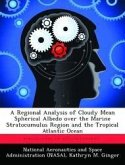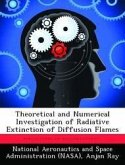Clouds play an important role in the radiation budget of the atmosphere. A good understanding of how clouds interact with solar radiation is necessary when considering their effects in both general circulation models and climate models. This study examined the radiative properties of clouds in both an inhomogeneous cloud system, and a simplified cloud system through the use of a Monte Carlo model. The purpose was to become more familiar with the radiative properties of clouds, especially absorption, and to investigate the excess absorption of solar radiation from observations over that calculated from theory. The first cloud system indicated that the absorptance actually decreased as the cloud's inhomogeneity increased, and that cloud forcing does not indicate any changes. The simplified cloud system looked at two different cases of absorption of solar radiation in the cloud. The absorptances calculated from the Monte Carlo is compared to a correction method for calculating absorptances and found that the method can over or underestimate absorptances at cloud edges. Also the cloud edge effects due to solar radiation points to a possibility of overestimating the retrieved optical depth at the edge, and indicates a possible way to correct for it. The effective cloud fraction (Ne) for a long time has been calculated from a cloud's reflectance. From the reflectance it has been observed that the N, for most cloud geometries is greater than the actual cloud fraction (Nc) making a cloud appear wider than it is optically. Recent studies we have performed used a Monte Carlo model to calculate the N, of a cloud using not only the reflectance but also the absorptance. The derived Ne's from the absorptance in some of the Monte Carlo runs did not give the same results as derived from the reflectance. This study also examined the inhomogeneity of clouds to find a relationship between larger and smaller scales, or wavelengths, of the cloud.
Hinweis: Dieser Artikel kann nur an eine deutsche Lieferadresse ausgeliefert werden.
Hinweis: Dieser Artikel kann nur an eine deutsche Lieferadresse ausgeliefert werden.








